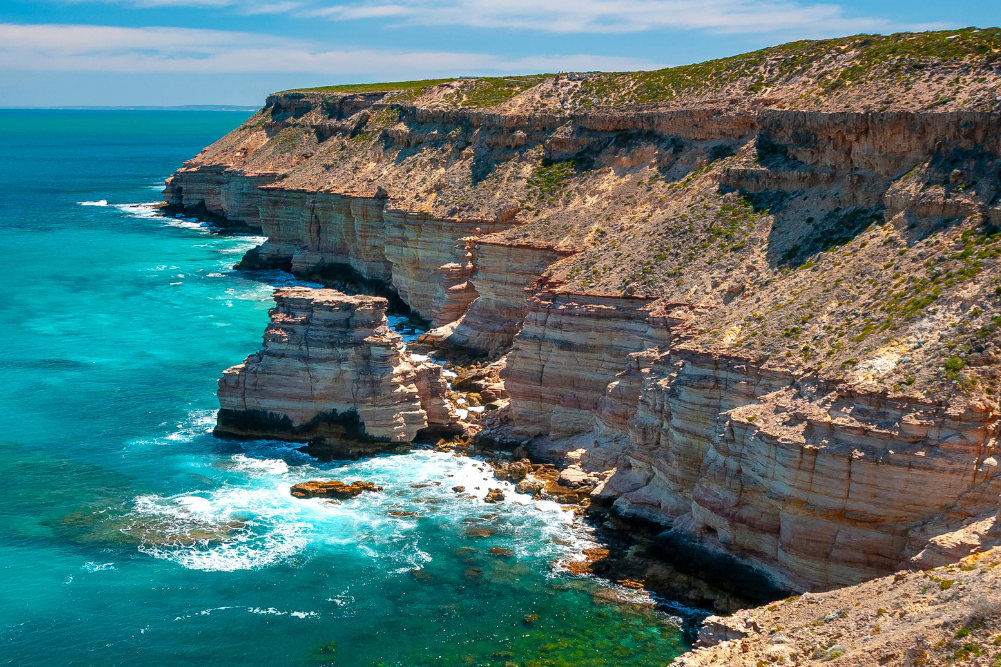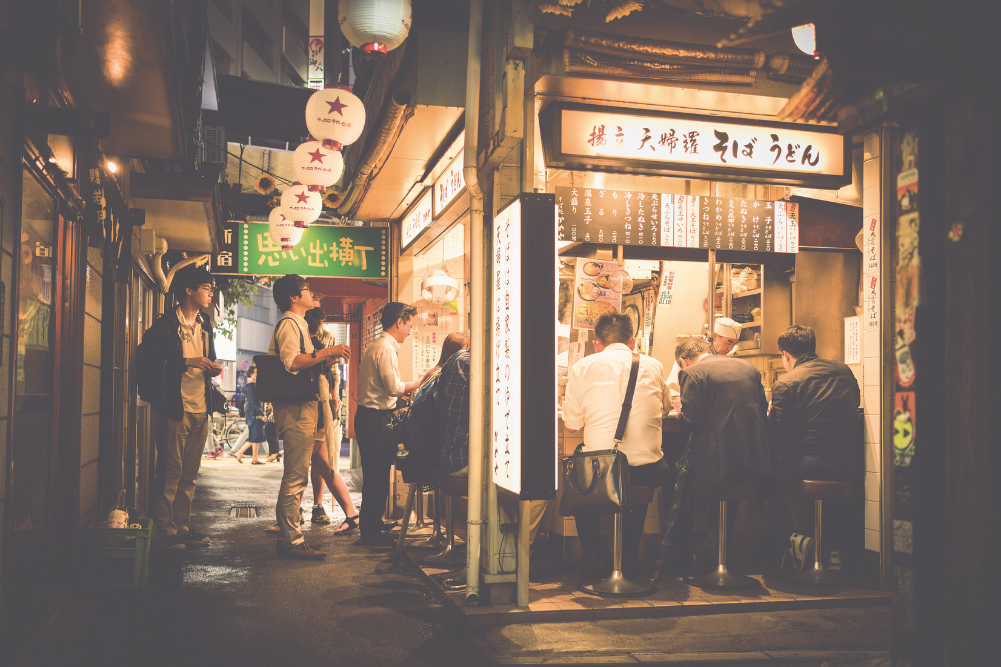Discover wild Sumatra
As I float on the Bohorok River, slowly spinning and drifting beneath the towering forest canopy, a sudden blaze of orange catches me off guard. While I clamber to find my feet on slippery rocks, a blur of amber crashing in and out of view swiftly materialises into the creature I’ve travelled so far to see. I catch my breath and stare because, in all my wildest dreams, I never imagined I’d encounter my first orangutan without even setting foot in the forest.
When I eventually do, joining rangers on a forest trek to Gunung Leuser National Park’s primate feeding station, a 30-year-old female orangutan carrying her wild-born infant ambles slowly past me within arm’s reach. Sitting cross-legged by the trail, I absorb the experience: the smell of her fur, the soft grunts as her feet pad silently past and her baby’s tiny fingers gripping fistfuls of fur as she clings on tight. The encounter is rapturous, the rush of adrenalin overwhelming, leaving me euphoric and utterly spellbound for days afterwards.
Sitting cross-legged by the trail, I absorb the experience: the smell of her fur, the soft grunts as her feet pad silently past and her baby’s tiny fingers gripping fistfuls of fur as she clings on tight.
It’s a memory that instantly returns me to remote Bukit Lawang, a world away from Bali on the wild western end of the Indonesian Archipelago. Here, Sumatra’s Gunung Leuser National Park provides sanctuary to the last and largest population of critically endangered orangutans, and wild adventures for tourists whose interest may hold the key to this rare creature’s survival.
Rivalling this exceptional orangutan encounter and rounding off an unbeatable Travel itinerary through untrampled Northern Sumatra are visits to remote Pulau Weh to snorkel coral gardens that have gone undiscovered for decades and an ascent of Mount Sibayak’s steaming volcano, teamed with a relaxing soak in the luxuriant hot springs at its base. These immensely rewarding adventures can be linked in a compact circuit out of Sumatra’s capital Medan, accessible via direct Air Asia flights from Kuala Lumpur.

Climb a volcano
The overloaded bus chugs slowly uphill, straining as it climbs an impossibly steep mountain road to Berastagi in the Karo Highlands. This cool hill station elevated above verdant, volcanic fields might seem an odd sort of destination for travellers if it were not for the twin peaks — Sibayak and Sinabung — that dominate its misty horizon.
After lying dormant for 400 years, Mount Sinabung erupted with a tremendous flare in 2010 and has been active ever since. But sleepy Sibayak continues to provide a great adventure within easy reach of Berastagi. Out of my hotel, across the street, past the village vegetable market and along a gradually ascending road that becomes a foot trail on the steepening flanks of Mount Sibayak, never has an escape into the outdoors been so easily executed.
Reaching Sibayak’s summit demands a little more grunt and a stiff three-hour climb to the top, followed by a leisurely downhill scramble to the hot springs at its base. Here you can soothe your weary limbs in plunge pools boiled to simmering perfection by Sibayak’s volatile core.
Keeping you company, long-tailed macaques call and crash through the dense jungle canopy as the sealed path switchbacks up the mountain.
The trail proper begins at a grimy coffee shop on the outskirts of town where climbers pay in pocket change to access the mountain trail. Keeping you company, long-tailed macaques call and crash through the dense jungle canopy as the sealed path switchbacks up the mountain.
About halfway up, where the clifftop trail disappears into the undergrowth, I push through a tangle of tree roots and vines, soaking my shoes in deep, muddy pools — although not for long. The jungle abruptly ends with the sudden rise in elevation and I step out onto a vastly changed landscape of barren rock and swirling mist that rises to Sibayak’s 2094m-high summit.
Gone, too, is the lovely damp scent of the mossy forest below, replaced by a nasty, rotten-egg aroma as gases escape the volcano’s hot, wet fumaroles, painting the rocky moonscape with splotches of fluorescent yellow that make the mountain look like a crazy paintball match has just taken place.
I follow the trail high into the clouds to reach the volcano’s silent crater, where the swirling mist reveals sudden glimpses of lush valleys and distant peaks far below. It might be a difficult viewpoint to leave if it were not for the chilling wind and spiralling temperature, so I tackle the downhill run, tumbling off the mountain through bamboo forest to Semangat Gunung: the village of hot springs.
Happily handing over less than a dollar to soothe my aching muscles and warm my chilly toes, I slide into blissfully hot pools and smile. A high point and a hot springs in one afternoon? It’s elation and bliss all rolled into one big, thrilling adventure.

Snorkel Pulau Weh
Striding from my bungalow balcony to the water’s edge in five quick steps, I dodge the giant moray eel staking out the shallows and fin quickly away towards Rubiah Island. Halfway across the channel’s calm, see-through sea, I stop to watch an eagle ray circling slowly up out of the blue, eyeballing me with each graceful lap.
When it reaches the surface and drifts silently out of sight, other marine creatures compete for my attention: hawksbill turtles, a skittish blacktip reef shark and a school of batfish that have me laughing into my snorkel as they try to hover in my shifting shadow.
Protected by its remoteness and a long-running civil war that closed borders and sealed off this pristine wilderness to the outside world in the 1990s, Pulau Weh and its neighbouring islands then bore the brunt of 2004’s catastrophic tsunami, which levelled the mainland city of Banda Aceh.
Despite the region’s recovery and Pulau Weh’s reputation as one of Indonesia’s best dive and snorkel sites, the traveller scene here is very mellow, no doubt influenced by the fact that Sharia law holds sway, prohibiting alcohol consumption. You can still enjoy a discreet beer on your bungalow balcony, but the adventurous travellers who arrive with loose itineraries and fins strapped to their backpacks aren’t expecting to party.
With overhanging waterfront bungalows and easy access to Rubiah Island’s rich Coral Garden, Iboih makes a great base. It’s an intimate sort of destination where prices are cheap, friendly guesthouses serve meals around communal tables, and all you need to explore is snorkelling gear and a sense of direction.
From Iboih, you can make a leisurely daytrip to Long Angen to snorkel a famous sea cave whose plate and stag corals survived a pounding from the 2004 tsunami. On the other side of the peninsula, a family homestay at Gapang Beach provides easy access to the famous shallow reefs that lure great numbers of hawksbill turtles. I swim with these morning and night when the tide rises, gliding silently past, eyeballing each other, swimming in harmony and without fear.
Pulau Weh’s shallow coral reefs are so accessible to snorkellers that I spend two weeks underwater without setting foot on a dive boat. These run daily guided trips to offshore reefs and shipwreck sites, but many travellers will be content with what can be reached in those five quick steps from a bungalow.

Encounter orangutans
In World Heritage-listed Gunung Leuser National Park, the narrow Bohorok River is all that separates orangutans, Thomas leaf monkeys and long-tailed macaques from travellers’ elevated treehouse balconies. Inhabited by eight species of primates, tigers, Sumatran rhinos, leopards and Asian elephants, and contained within the 2.6 million-hectare Leuser Ecosystem — the final stronghold for 5000 of the world’s last 6600 critically endangered orangutans — Gunung Leuser National Park protects one of the world’s richest tropical forest ecosystems.
Getting to grips with the enormity of this biodiverse park means going in deep, hiking far from the palm plantations that fringe its borders and getting down and dirty for a night camped in the company of all kinds of rainforest critters, including rarely seen cobras. This adventure won’t guarantee you’ll tick off your list of prized Sumatran species, but it’s the best way to experience the forest and perhaps eyeball one of our most distant ape cousins. Overnight hikes start from about AU$60 and local guides will find you and sign you up without you having to organise a thing.
Pulau Weh’s shallow coral reefs are so accessible to snorkellers that I spend two weeks underwater without setting foot on a dive boat.
The less daring option involves a canoe trip across the Bohorok River and a 10-minute hike guided by park rangers who carry a twice-daily feed of milk and bananas to an elevated platform in the forest canopy. Although 229 rehabilitated orangutans were released into the national park from 1973 to 2001, only about 16 semi-dependent orangutans now live close to Bukit Lawang.
The twice-daily feeds are designed to be bland compared to what might otherwise tempt the orangutans’ palates in the wild. Any or none of the orangutans might turn up for a snack, usually pregnant and nursing mothers who arrive with tiny babies on their backs when forest fruits are in short supply.
Sessions take place morning and afternoon and cost about AU$15 per person, plus AU$5 for a camera permit and AU$15 if you want to shoot video. I got lucky on my visit but the orangutans don’t always show up. When they do, swinging down out of the canopy, your allotted hour in their presence will be 60 of the finest minutes you are ever likely to enjoy.
It’s definitely the orangutan encounters that bring travellers to this faraway forest location, but the local bat caves and a riverside walking trail that provides an escape upstream are worthy additions to any Bukit Lawang itinerary. Criss-crossing the river, an undulating trail rockhops over granite boulders and past deep, silent swimming holes with hot, sandy banks.
Twice while floating here I spotted orangutans snacking on succulent foliage on the canopy’s edge, their positions revealed by blazes of orange fur. Keeping us company on the 3km-long walk, long-tailed macaques performed their restless routines of grooming and mating, and upstream a local man focused our attention on a silent troop of Thomas leaf monkeys, curiously staring out at us from beneath their stripy punk hairdos.
Pack a torch before setting out along the short trail through forest and rubber plantation that reaches the Bat Cave on the edge of the national park (20mins/2km) and two others beyond: Ship and Swallow Caves.
Of the endless choice of guesthouses that hug the Bohorok River, not-for-profit Ecolodge Bukit Lawang rates well among travellers for the organic Garden that fuels the restaurant, its recycling efforts and sustainable ethos. Rates start from AU$15–35.

Escape routes
- Getting there
Air Asia, Malaysia Airlines and Qantas all fly direct to Kuala Lumpur. Air Asia connects to Sumatra’s capital Medan where 30-day visas are offered to Australians on arrival (US$35). Buses depart Medan’s Pinang Baris bus station for Berastagi (90 minutes) and Bukit Lawang (2.5 hours). To reach Pulau Weh, fly Lion Air, Garuda or Sriwijaya Air to Banda Aceh, catch the fast ferry and continue by taxi to Iboih (pronounced ee-bow).
- When to go
The dry season from February to September.
- What to pack
Lightweight hiking boots and a waterproof jacket for Gunung Sibayak’s often wet and windy summit; malaria medication and snorkelling gear for Pulau Weh; adventure sandals to explore Bukit Lawang, and plenty of local currency.








